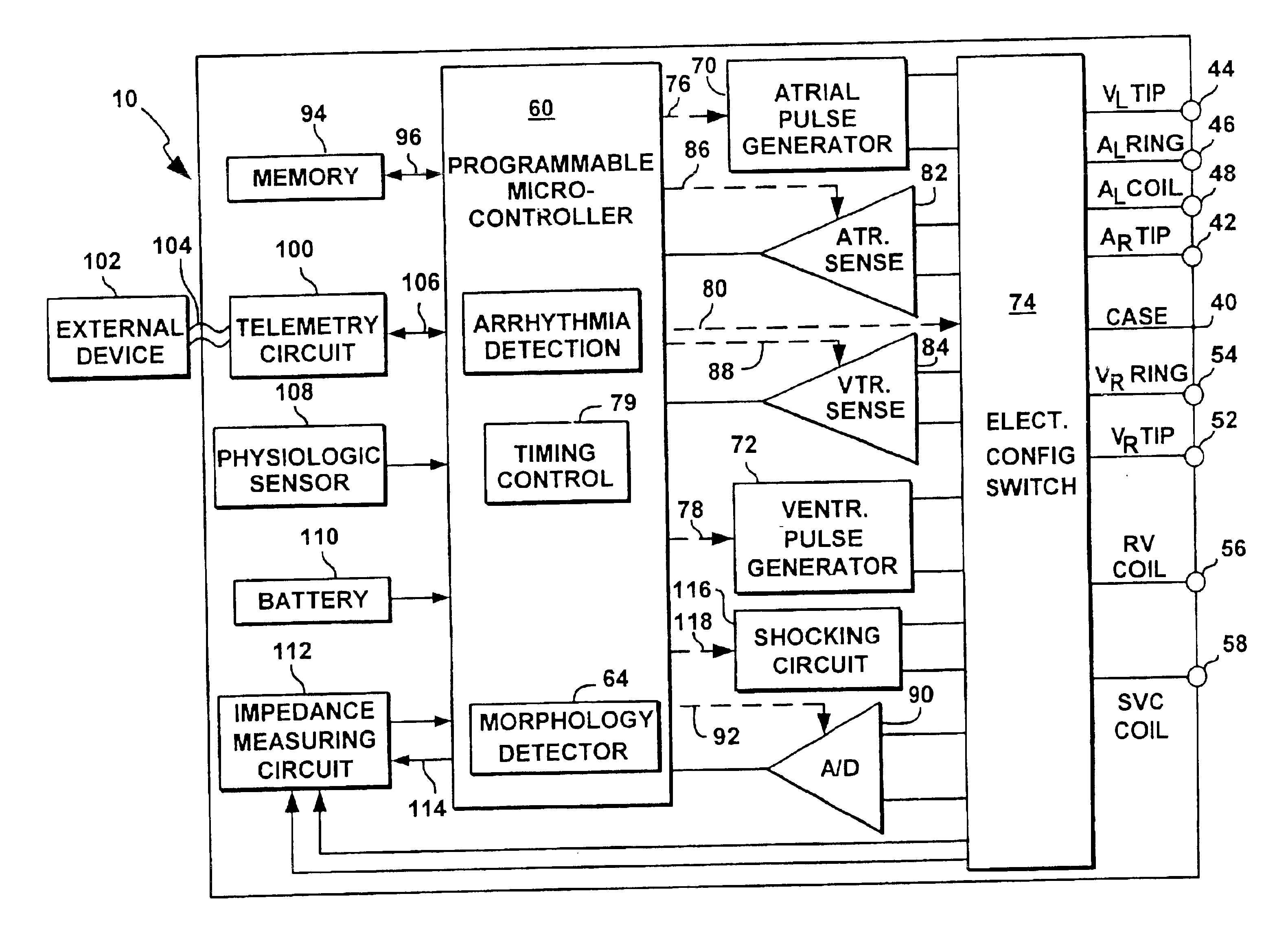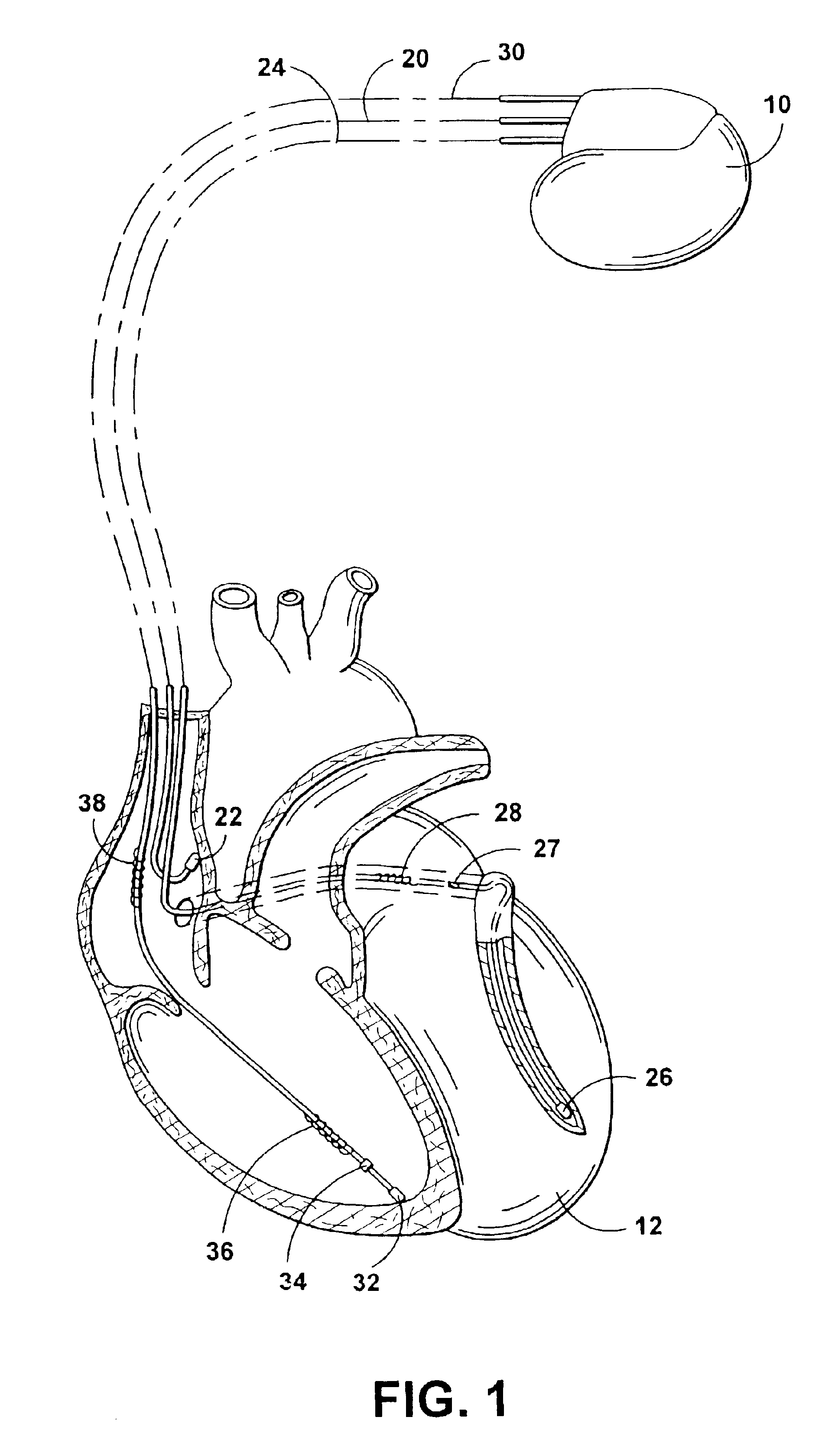System and method of identifying fusion for dual-chamber automatic capture stimulation device
a technology of automatic capture and fusion detection, which is applied in the field of programmable cardiac stimulation devices, can solve the problems of loss of capture, patient discomfort, and time-consuming and complicated programming process, and achieve the effects of accurate detection of fusion, confirmation of capture, and improved performance of pacemaker devices
- Summary
- Abstract
- Description
- Claims
- Application Information
AI Technical Summary
Benefits of technology
Problems solved by technology
Method used
Image
Examples
Embodiment Construction
[0030]The following description is of a best mode presently contemplated for practicing the invention. This description is not to be taken in a limiting sense but is made merely for the purpose of describing the general principles of the invention. In the description of the invention that follows, like numerals or reference designators will be used to refer to like parts or elements throughout.
[0031]The present invention is directed at distinguishing fusion from loss of capture during ventricular AUTOCAPTURET™ regimes. When fusion is verified, back-up ventricular stimulation is inhibited and no threshold test is performed as would normally occur following a loss of capture detection. Furthermore, stimulation parameters may be automatically adjusted following fusion verification in order to prevent fusion from occurring on future paced beats. These methods are preferably implemented in a cardiac stimulation system including any one or more of an implantable pacemaker, a cardioverter,...
PUM
 Login to View More
Login to View More Abstract
Description
Claims
Application Information
 Login to View More
Login to View More - R&D
- Intellectual Property
- Life Sciences
- Materials
- Tech Scout
- Unparalleled Data Quality
- Higher Quality Content
- 60% Fewer Hallucinations
Browse by: Latest US Patents, China's latest patents, Technical Efficacy Thesaurus, Application Domain, Technology Topic, Popular Technical Reports.
© 2025 PatSnap. All rights reserved.Legal|Privacy policy|Modern Slavery Act Transparency Statement|Sitemap|About US| Contact US: help@patsnap.com



